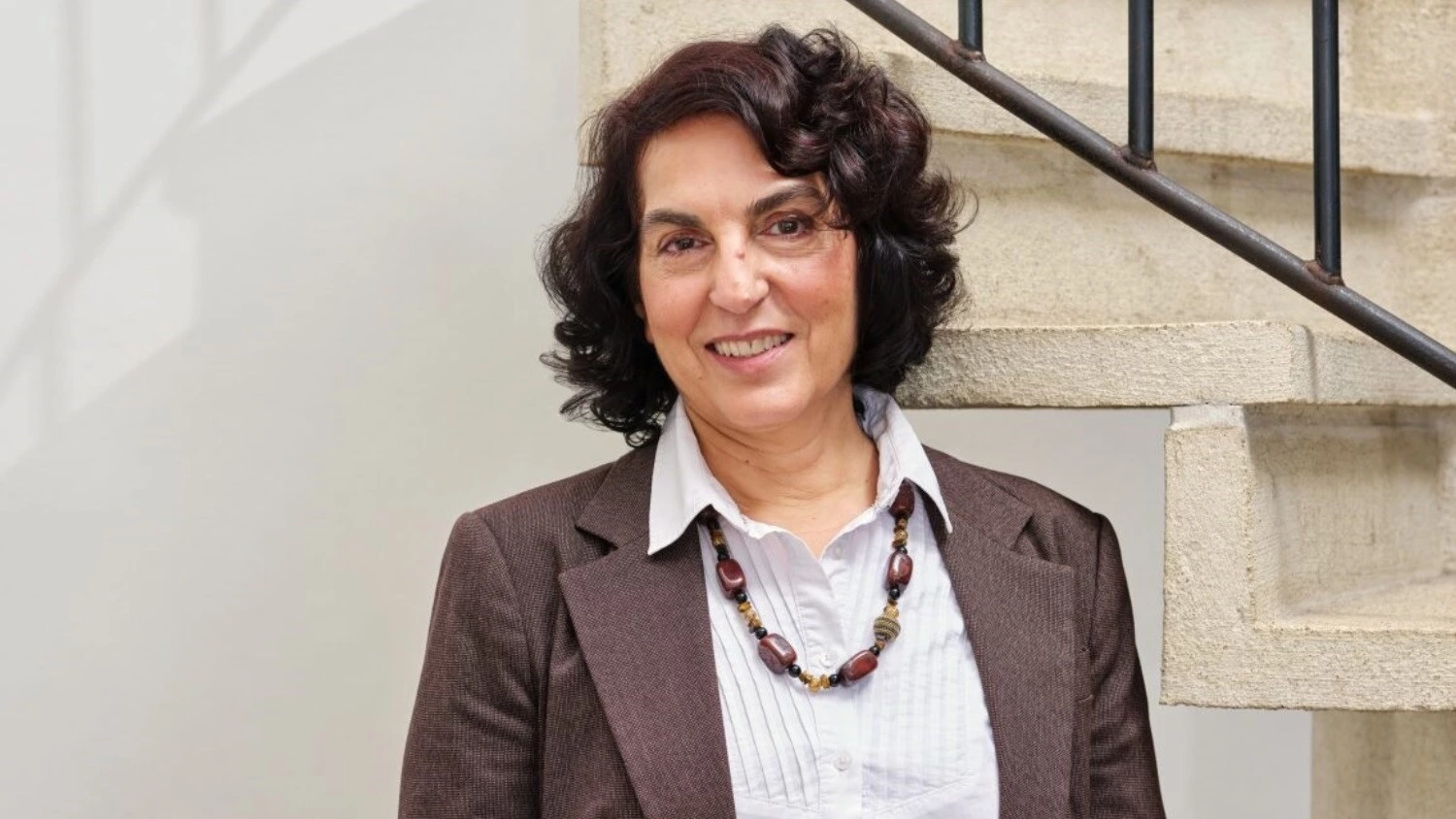
Tina Paillet, President of RICS, talked to Property Forum at Mipim about the real estate industry's crucial role in addressing climate change. She highlighted the sector's significant environmental impact and emphasized the need for the industry to become a force for good.
A year ago, I had a conversation with you as President-Elect and we talked about the main goals and priorities for RICS that you planned to continue to focus on as President. Can you tell me what has changed in the last year? Is there any way in which the focus and priorities have shifted?
Last year, under Ann Gray's presidency, there was an enormous amount of foundational work that had to be undertaken. Things like setting up our governance structures, new bodies, recruiting and setting up new top-level management and chairs of committees. Among others, we set up a knowledge and practice committee and a new RICS board, which is a pretty big deal. We brought on a new chair and a new Head of Tribunal and we have now a permanent CEO. It was an intense time, there was a lot of work that needed to be done so that we could move forward.
We also put together a new strategy, which is based on four main pillars. The first one is membership services. It's all about becoming an organization that is membership-focused, that improves and really maintains our membership through healthy offerings of services that are appropriate for them. It's about attracting a diverse next generation. It's about strengthening our regulation and strengthening our trust in the profession. And then the final one is about leading leadership and sustainability. So those four strategic focuses are really what's driving RICS forward. And underpinning all of that, we want RICS to be a world-class organization, in the way it treats its stakeholders, clients, and members, that it's both reactive and proactive. Ann Gray had a huge amount of work, putting that all into a very good place for me to be able to then move forward.
My vision for the presidency is now to be much more outward-focused because I feel that our profession has a huge responsibility towards the climate, the planet and the public. We need to start becoming a force for good and turning back some of the very negative impacts that our sector has on the environment. Let's talk about a few numbers. Globally, about 40% of CO2 emissions are from the construction and real estate sector. About half of our natural resources are mined for us. Over a third of our waste streams are produced by our activity and by our industry. So the impact is vast, but there are things we can do.

Tina Paillet
President
RICS (Royal Institution of Chartered Surveyors)
Could you highlight some of the actions industry players can take to reduce the environmental impact of their business activities?
Within the wider picture of sustainability, I think it's really important that we focus on two main topics which are very tangible, and which are huge step changes for the industry. The first one is decarbonizing our built environment. It means using a whole-life carbon assessment standard, which came out in September of last year. Since we met last time, we have successfully developed this modified standard and now it covers all building types, as well as infrastructure. It also can be adapted to be used in all countries. And it can be adapted to be a bridge for more local lifecycle assessments that can be done, so that's key. To do that, we also need trained individuals, so we've set up a training program in order to train those professionals that want to become a carbon assessor. We're also developing an accreditation program because a lot of companies or corporations have to report their carbon emissions. They need to be third-party accredited and assessed. So what we are providing are the means for our members and beyond, for virtually anyone to become accredited assessors of carbon.
The second part is driving the uptake of the circular economy. It's an entirely new way of doing things. It means we change the way we design, procure, construct, deconstruct or manage. It has impacts all across the value chain. In a standard demolition process, only 1% of materials are reused. Huge amounts of materials are wasted and our planet does not have enough resources for us to continue to keep reaping; they're not infinite, which we thought they were for a long time. We need to start being much more efficient with our resources. Part of that means carefully deconstructing buildings or fit-outs or assets when they've come to the end of their useful life and reusing those materials and products in other projects. The problem is that we've been talking about this for a while. Everyone knows and heard about it, it's a really big buzzword. But the reality is that we're still practically nowhere when it comes to actually rolling it out. So my idea for RICS was that we create a core group of ‘doers’. This is what I'm calling the circular ‘do-tank’ - rather than a think tank.
The idea is convening several players who will sign a pledge, whereby they are willing to undertake the reuse of materials on their development or fit-out projects throughout a certain timeframe- let’s say three years. The idea is to get several ‘doers’, whether they be end-users or real estate investors, real estate developers, or asset managers that have projects that they are delivering, in which they can include a portion of reused materials. I repeat – reused, not recycled. Reuse is way at the top of the circularity pyramid, recycling is oftentimes downcycling, which means that the materials get crushed and used as a roadway, for example. What we need to do, is to keep them at their highest and best level and reuse them at that level.
Not only is the idea that we get the ‘doers’ to sign up for this but that we have a core team of support. We've got lawyers, accountants, insurers, architects, engineers, planners, all sitting around the table, and we're not spinning our wheels, saying, “Ah, this is going to be a problem, we're going to have to figure out how to do this before we start working on it”. We're going to say ”Doers, go out and do it, and when you come across a problem, come to us, we'll find a solution”. And then each project becomes a case study, which proves that it's feasible.
I have an example of a project in London, where the developer identified some steel that was going to come down from a major department store that was being demolished. That steel was from the 30s. The investor said, “I'd like to use that steel on a new development that I'm working on the other side of town”. And all the consultants said, “No, that's not going to be economically feasible”. But he kept pushing and querying and at the end of the day, it turned out that the only price increase was about 10,000 pounds. That amount of money was absorbed by the steel reuse company themselves because they found that they could do a huge amount of marketing around the idea that they were recovering this reused steel. And so, suddenly, the entire market now knows that pre-war steel is perfectly usable. That's why I think case studies are not just pieces of paper, but they're living proof that will change the paradigm shift that we need to change so that we can adopt this and embrace a circular economy. So those are going to be my two main focuses.
What are the main challenges ahead? How are you going to make people use the standards that RICS has created and apply these circular solutions that you mentioned?
So for decarbonisation, last week I spent a couple of days in Paris at the Buildings & Climate Global Forum, organized by UNEP, the United Nations Environmental Program with the French Ministry for the ecological transition. Over 70 countries were convened - their representatives, ministers of construction, infrastructure or housing - all these different ministers from these different countries - to convene on how they could make a step change in their countries. And at the end of that event, 70 countries signed up for what's called the Chaillot Declaration. That means that those 70 countries will not only be introducing whole life carbon policy into their local legal systems, but they will also be developing financing mechanisms, they will be reporting back on regular meetings with a group of 70. So, there's a bit of peer pressure as well. Most of Europe signed up to it, we also have all of North America, a good part of the Middle East and Africa as well. Those countries are now willing to carry out whole-life carbon assessments on all of their new builds and all of the refurbishment projects to ensure and then have thresholds not overshot. It means that each building will participate in the decarbonisation of the sector. I think that's a huge win.
The final topic I wanted to talk about is education. Can you share how you got into real estate? And why do you think young professionals looking for career paths these days should go into this industry?
How did I get into the field? I remember going to the orientation counsellor and saying, “I love math and I want a creative field”. Right away, she said, “Oh, you should go into engineering” and I'm like, “No way”. She said “Okay, I see you're very good with spatial understanding, so why don't you go into architecture?”, and I'm like, “Oh, I never thought about that”. And so, I went into architecture. It's amazing how one person's idea can spur on a good part of a career. Then, after having worked in architecture for many years, I started working on projects for different real estate developers. I started getting interested in that and I decided to go back to school and get a specialized Master's in urban management at the ESSEC business school in Paris. Then I moved into a whole lot of different fields within the wider scope of real estate - urban planning, construction management, project management, business development, investing and developing. I had a pretty wide-ranging career.
As for the other part of your question, I think we do need to reach out to young students early on. People don't understand how incredibly varied and tangible this profession is. What's going to interest the next generation, is that this is a field where you can make a difference and have an impact. And it's tangible, you can see it and you can touch it. That's pretty rare in our days, especially if you also want something that's not necessarily sitting behind a desk all day.



